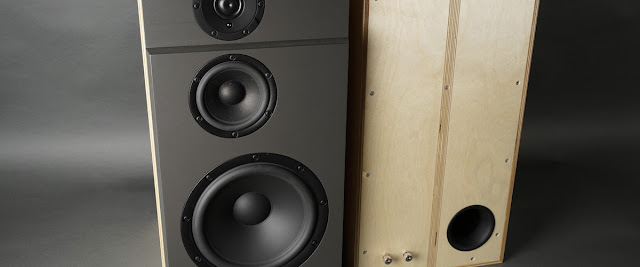The 3-Way Classic Part 7.
DIY is the freedom to do pretty much whatever you like. It can be a blessing but also a curse. Great flexibility means endless options and endless options might lead to paralysis by analysis. That is the place where I have been for the last couple of weeks. Getting into every detail coming up with individual solutions making the whole a lot more complex without accomplishing much. Time to take a step back and make the final call.
Lets start with the passive filter. A second order Butterworth or LR @ 3700 Hz seems like a good start, and a Zoobel on the mid-range seems well worth it. A couple of resistors to smoothen things out and this is where I ended up after rounding component values to what I can easily source locally.
Not focusing on just the frequency response but the whole, here is the six-pack.
Response, impedance, phase and filter gain seems reasonable. Time to take a closer look at the power response and DI. Fairly flat but is flat really what we want? Chances are that this might sound thin and overly bright. The papers Relevant loudspeaker tests in studios in Hi-Fi dealers' demo rooms in the home etc. by Henning Motter, Briiel & Kjaer and The Subjective and Objective Evaluation of Room Correction Products by Sean E. Olive, John Jackson, Allan Devantier, David Hunt, and Sean M. Hess R&D Group, Harman International is a good read. I like the quote "Flat in-room response is not the optimal target response (program may be a nuisance variable)". In the latter paper the preferred target frequency response is a straight line starting at 0 dB @ 20 Hz down to -10 dB at 20 kHz (see slide 24). The pink line in the diagram below represents such a target line but how to get there?
Lets assume a 2 dB room gain. I simulate it by adding 2 dB to the output buffer of the LF-branch in VituixCAD. Next step would be to boost the LF-branch with a matching slope. I use the same first order shelving low-pass filter as for the baffle step correction. I used 600 Hz as the middle frequency instead of the baffle step frequency of 383 Hz for a minimal impact on the crossover point. The final step is to remove the L-pad on the mid-range HF-branch.
Here are the six-pack.
And a closer look at the power response and DI.
2 db room gain, an active second order LR @ 600 Hz combined with a 3 dB shelving low-pass @ 600 Hz seems to take us pretty close to the target (without being a too convoluted and complex solution). This is what such a filter might look like (component values and response):
This will hopefully be my final call but there are endless opportunities and your mileage may vary.
This marks the end of the seventh part about my 3-Way Classics. And like I said in the previous post, time to order some parts, etch, drill and solder...














